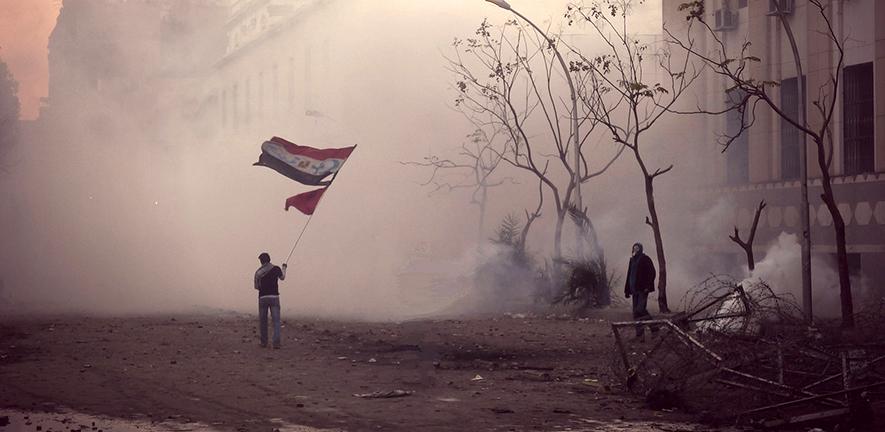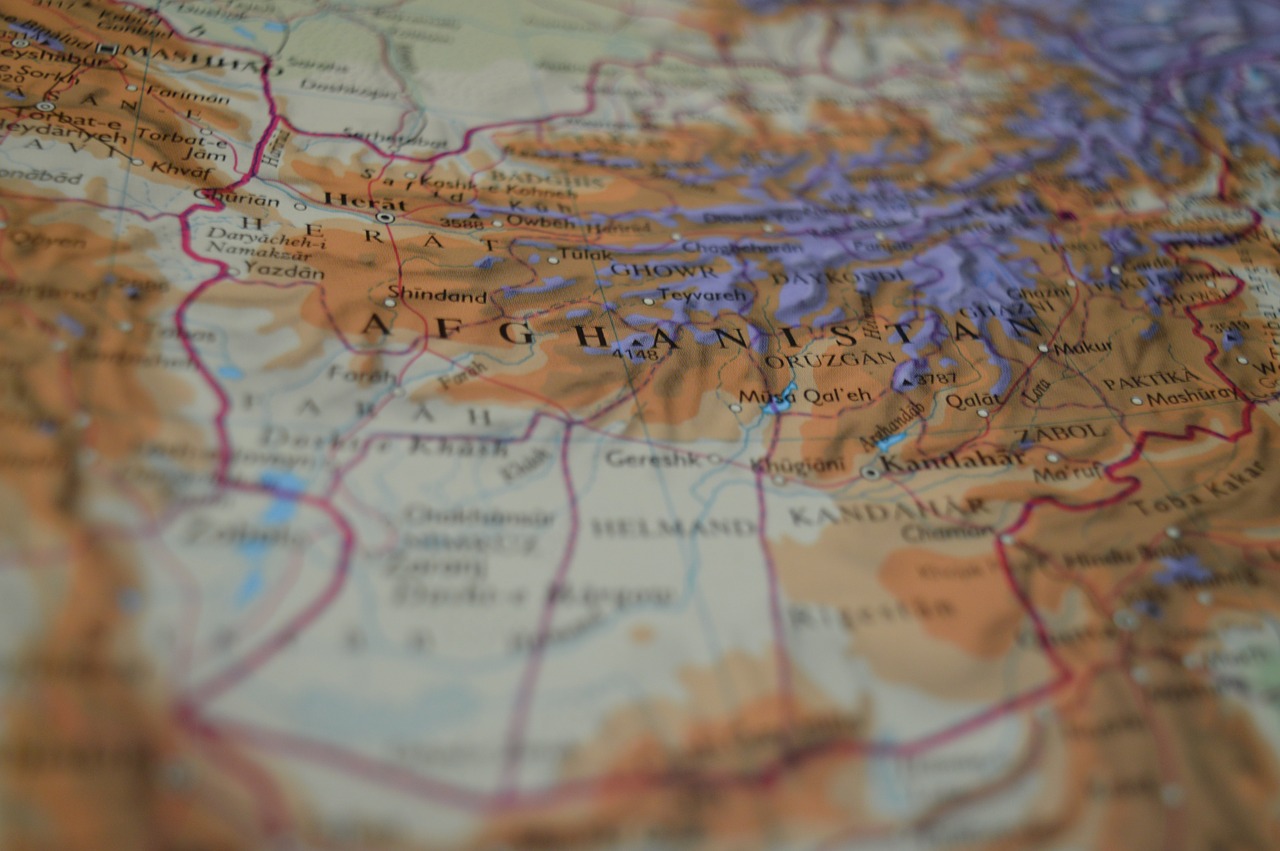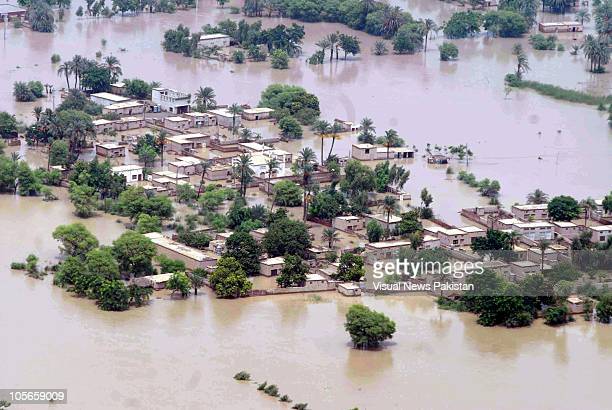
Mapping Middle Eastern Politics and the Covid-19 Challenge
May 21, 2020
Trans-Afghan Railway Network and Regional Connectivity
September 21, 2022
The last few weeks have had the world ghastly witnessing the devastation caused by floods across Pakistan. Responsible for contributing merely less than 1% to the global CO2 emissions, the price being paid by the country is too high. Pakistan has been ravaged by the deadliest floods ever recorded in its history. Satellite images have confirmed that over one-third- of the country remains underwater. The observatory images also show the overflowing of Lake Manchar which is threatening the nearby villages as authorities scramble to drain the lake to save the nearby areas from further flooding. According to initial assessments, Pakistan suffers an estimated economic loss of over 40 billion dollars. But the situation remains grim as the human and economic loss continues to be calculated but until the water level recedes; the complete extent of the damage cannot be ascertained.
The aftermath of these floods has experts and authorities discussing international negligence on the issue of climate change to the country being unprepared and not learning from the floods of 2010. Pakistan’s foreign minister called it a climate disaster of biblical proportions and others argued that no country in the world is structurally capable of standing such floods. The disaster has however exposed Pakistan’s shortcomings and unpreparedness to face weather-related calamities. What lies ahead is a long road to recovery in the economic, agricultural, infrastructure, and rehabilitation process of the flood affectees. Authorities in the country need to develop short and long-term phases for a more systematic reintegration of the affected population back into their areas once the flood waters clear. Most of those are the class of people that depend upon agriculture and livestock and are responsible for feeding much of the country. The spread of water-borne diseases must be monitored as medical camps set up nearby are reporting such cases along with malnutrition and in worst cases starvation of those still awaiting food supplies. The psychological impact of such events on the communities must be studied and addressed as well. After the human aspect, national infrastructure will need major reconstruction which needs to be designed keeping in view the possibility of climate-related destructions. This means building a more climate-adaptive infrastructure.
Adding to the recommendations; Hassan Aftab a Ph.D. scholar on climate change at Cambridge says that with our limited resources and funds, we need to implement low-cost climate flood adaptation methods that will have economic and social benefits long term. If you look at 2010 and 2022, the areas inundated are quite similar—although the 2022 floods were much more intense. The first step would be allocating funds for a flood hazard risk assessment, so we know our vulnerable communities, infrastructure, and our current coping capacity. The second would be to map the informal communities in Baluchistan and Sindh, many of these houses are unknowingly built in areas that get swept away from hill torrents. The third step would be to invest in adaptive infrastructure that could include reservoirs, and infiltration basins—we cannot do this alone, we would need expertise from around the world to help build climate-ready infrastructure. All we need right now are measures that will reduce our vulnerability and exposure to destructive floods because the hazard will remain for many decades to come. The idea is implementable as Pakistan has international assistance and its teams are present on the ground. The calamity in the country calls for a transparent national body that keeps a track of the relief efforts and their reach; particularly the hard-to-reach areas. The task requires all concerned bodies and their combined effort to form a database and a tracking mechanism open to public access as well. All this is a multifaceted process that involves close coordination between the provincial, and federal government as well as the international partners.
Until the process of the relief effort is completed, the government would need to keep the issue as its top priority- that should include working on long-term plans to revive the affected communities so they can be reintegrated into society and the country’s economy. On the level of discourse, the floods have brought back the need and urgency to understand what climate change and climate security mean for Pakistan and its future. This sensitization must be used to educate the masses on the issue and for those in the government and the policy-making circle; to bring in experts to make Pakistan a climate resilient country for the future generation and to benefit from the scientific advances in the agricultural and water management sectors. Pakistan needs to protect its crops from climatic changes to avoid food insecurity. Pakistan as one of the most vulnerable countries to climate change must push the green initiative at the international level and remind the developed world of climate change resolutions by becoming an example as it recovers from the recent floods.
Aisha Saeed is a an independent media and foreign policy analyst. She tweets @MsAishaK.
The last few weeks have had the world ghastly witnessing the devastation caused by floods across Pakistan. Responsible for contributing merely less than 1% to the global CO2 emissions, the price being paid by the country is too high. Pakistan has been ravaged by the deadliest floods ever recorded in its history. Satellite images have confirmed that over one-third- of the country remains underwater. The observatory images also show the overflowing of Lake Manchar which is threatening the nearby villages as authorities scramble to drain the lake to save the nearby areas from further flooding. According to initial assessments, Pakistan suffers an estimated economic loss of over 40 billion dollars. But the situation remains grim as the human and economic loss continues to be calculated but until the water level recedes; the complete extent of the damage cannot be ascertained.
The aftermath of these floods has experts and authorities discussing international negligence on the issue of climate change to the country being unprepared and not learning from the floods of 2010. Pakistan’s foreign minister called it a climate disaster of biblical proportions and others argued that no country in the world is structurally capable of standing such floods. The disaster has however exposed Pakistan’s shortcomings and unpreparedness to face weather-related calamities. What lies ahead is a long road to recovery in the economic, agricultural, infrastructure, and rehabilitation process of the flood affectees. Authorities in the country need to develop short and long-term phases for a more systematic reintegration of the affected population back into their areas once the flood waters clear. Most of those are the class of people that depend upon agriculture and livestock and are responsible for feeding much of the country. The spread of water-borne diseases must be monitored as medical camps set up nearby are reporting such cases along with malnutrition and in worst cases starvation of those still awaiting food supplies. The psychological impact of such events on the communities must be studied and addressed as well. After the human aspect, national infrastructure will need major reconstruction which needs to be designed keeping in view the possibility of climate-related destructions. This means building a more climate-adaptive infrastructure.
Adding to the recommendations; Hassan Aftab a Ph.D. scholar on climate change at Cambridge says that with our limited resources and funds, we need to implement low-cost climate flood adaptation methods that will have economic and social benefits long term. If you look at 2010 and 2022, the areas inundated are quite similar—although the 2022 floods were much more intense. The first step would be allocating funds for a flood hazard risk assessment, so we know our vulnerable communities, infrastructure, and our current coping capacity. The second would be to map the informal communities in Baluchistan and Sindh, many of these houses are unknowingly built in areas that get swept away from hill torrents. The third step would be to invest in adaptive infrastructure that could include reservoirs, and infiltration basins—we cannot do this alone, we would need expertise from around the world to help build climate-ready infrastructure. All we need right now are measures that will reduce our vulnerability and exposure to destructive floods because the hazard will remain for many decades to come. The idea is implementable as Pakistan has international assistance and its teams are present on the ground. The calamity in the country calls for a transparent national body that keeps a track of the relief efforts and their reach; particularly the hard-to-reach areas. The task requires all concerned bodies and their combined effort to form a database and a tracking mechanism open to public access as well. All this is a multifaceted process that involves close coordination between the provincial, and federal government as well as the international partners.
Until the process of the relief effort is completed, the government would need to keep the issue as its top priority- that should include working on long-term plans to revive the affected communities so they can be reintegrated into society and the country’s economy. On the level of discourse, the floods have brought back the need and urgency to understand what climate change and climate security mean for Pakistan and its future. This sensitization must be used to educate the masses on the issue and for those in the government and the policy-making circle; to bring in experts to make Pakistan a climate resilient country for the future generation and to benefit from the scientific advances in the agricultural and water management sectors. Pakistan needs to protect its crops from climatic changes to avoid food insecurity. Pakistan as one of the most vulnerable countries to climate change must push the green initiative at the international level and remind the developed world of climate change resolutions by becoming an example as it recovers from the recent floods.
Aisha Saeed is a an independent media and foreign policy analyst. She tweets @MsAishaK.









